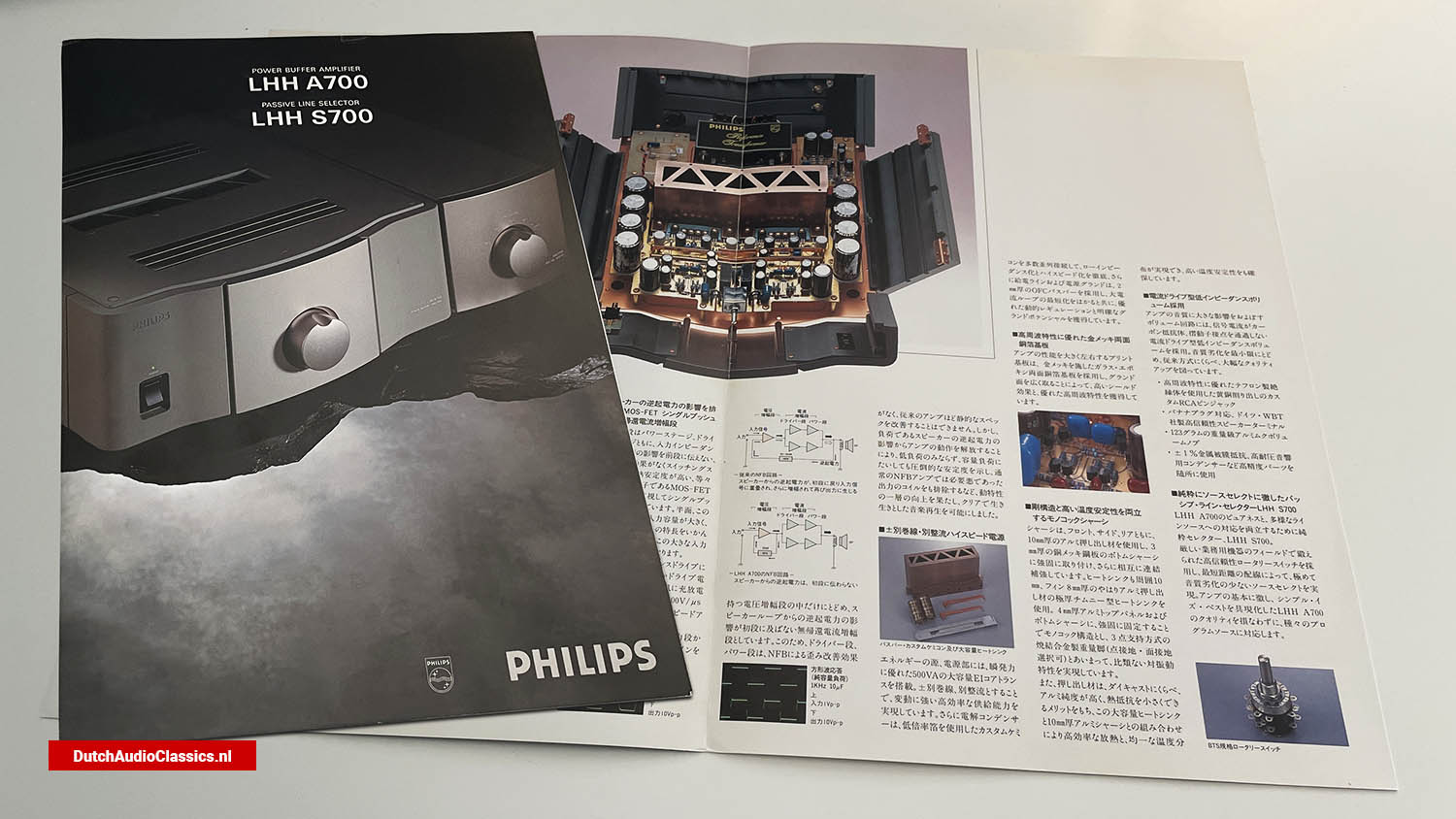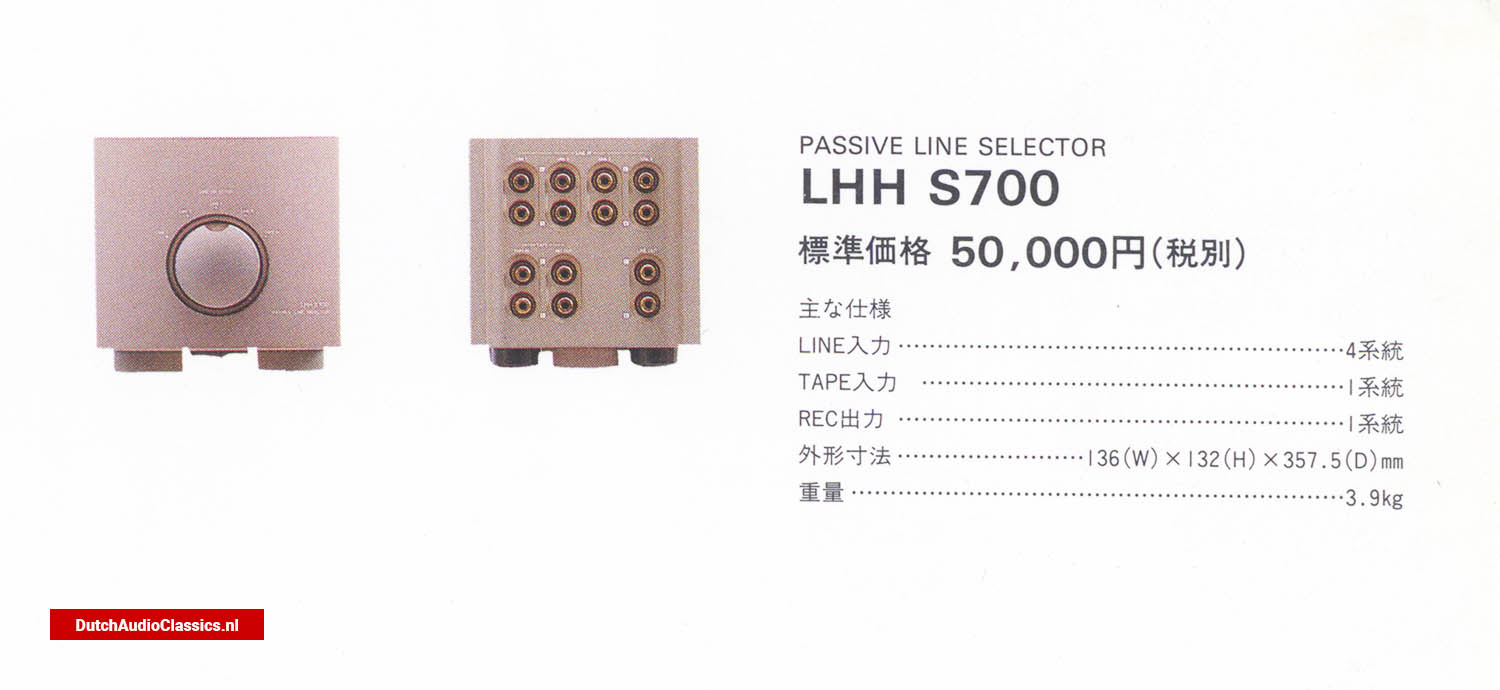NFB (Negative Feed Back) is a basic technology for transistor amplifiers. This technology inverts the output of the amplifier and returns it to the input to cancel out distortion, and is used in most of today's audio amplifiers. The greater the amount of NFB, the better the distortion, frequency response, and other characteristics can be improved.
However, it is not necessarily a panacea for audio amplifiers, which require high dynamic characteristics for "music reproduction. For example, one of the dynamic characteristics is transient response, which expresses the speed of response of an amplifier.
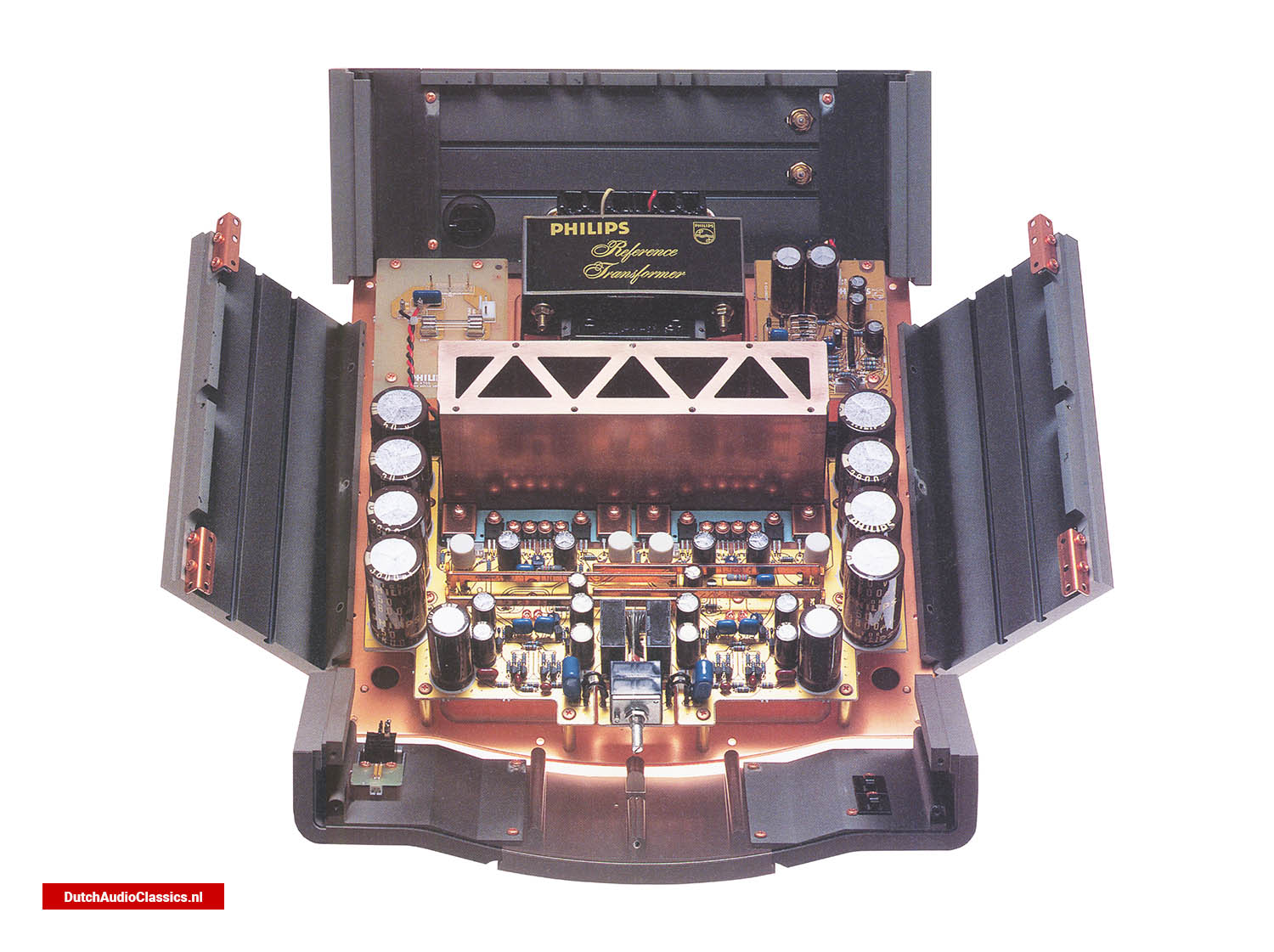
Applying a large amount of NFB will deteriorate this response, and even if the amplifier circuit and power supply are configured with high-speed elements, they will not be able to demonstrate their capabilities and will not be able to follow instantaneously changing music signals.
The Philips LHH A700 uses a wide-bandwidth, small-capacity bipolar transistor in the voltage amplification stage to achieve an open-loop frequency response, which is the bare characteristic before NFB is applied. The open-loop frequency response, which is the bare characteristic before NFB is applied, has been dramatically improved to 500KHz (-3dB) compared to the conventional model. The NFB can be reduced to less than 20dB, which significantly improves the dynamic characteristics and realizes true music reproduction with a sense of dynamism.
The current ground stage has high input impedance for both the power stage and driver stage, and does not transmit the influence of load to the preceding stage. The MOS-FET is a device with the following features: fast switching speed without carrier stacking effect, high thermal stability, and so on.
Philips LHH A700 & S700 1994 Japanese Brochure
MOS-FETs are used in a single push-pull configuration with emphasis on linearity. On the other hand, the MOS-FET has a large equivalent input capacitance. In order to fully demonstrate the features of high-speed switching devices, the handling of this large input capacitance is a healthy issue. The problem is how to handle this large input capacitance in order to fully demonstrate the features of a high-speed switching device. In this model, a low impedance drive is used. This allows a slew rate of 200 V/uS and a high speed amp over all by charging and discharging this capacitance all at once.
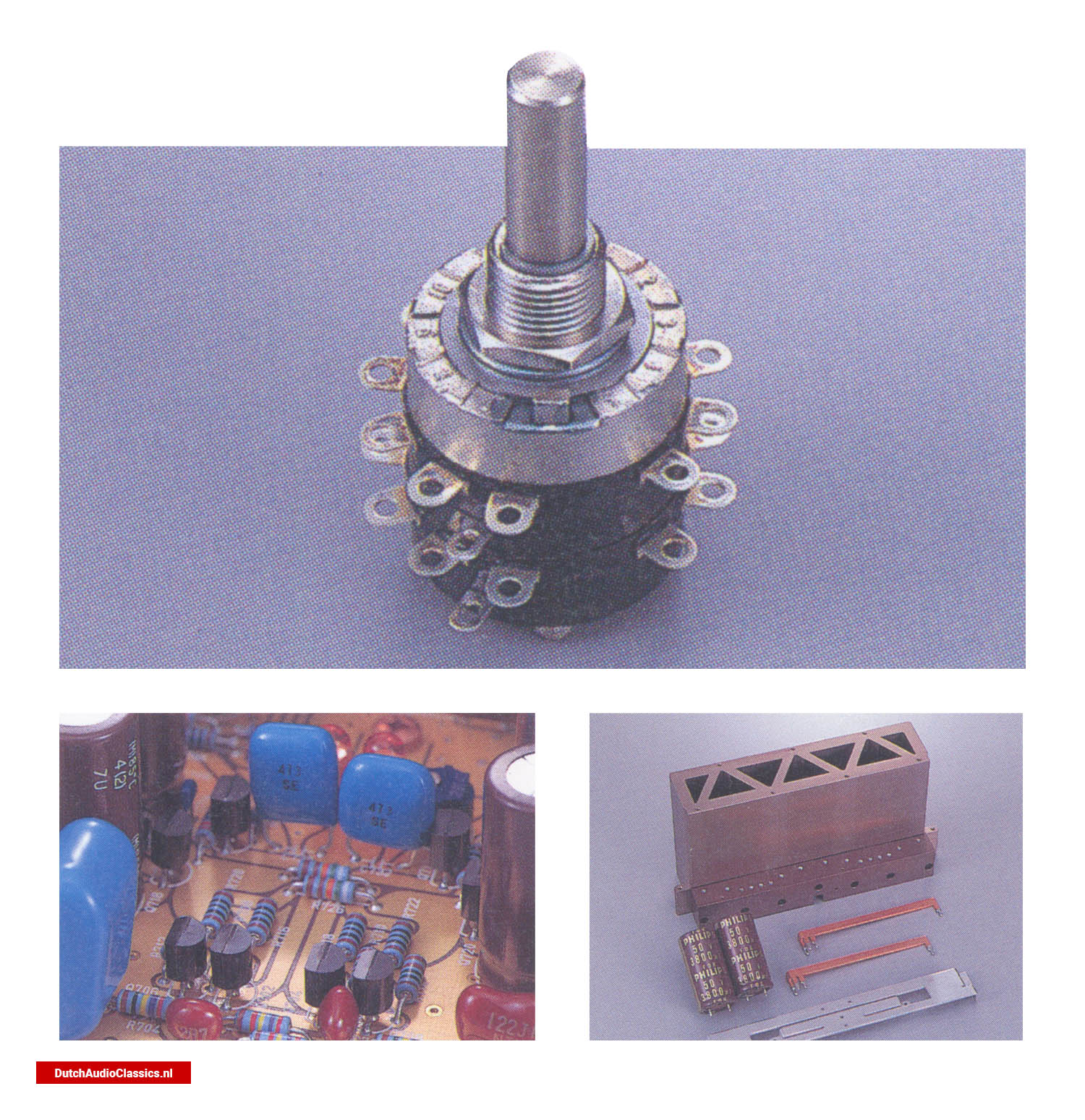
This enables a through-rate of 200 V/uS and overall high-speed amplification. Furthermore, the Philips LHH A700 is a non-return current amplification stage in which NFB, which was conventionally returned from the output stage to the input, is kept only in the voltage amplification stage with gain, so that the effect of back EMF from the speaker loop does not reach the first stage.
This makes it a non-return current amplification stage where the back EMF from the speaker loop does not affect the first stage. Therefore, the driver and power stages do not improve distortion by NFB, and cannot improve static specifications as much as conventional amplifiers. However, by freeing the amplifier operation from the influence of the back EMF of the speaker load, it shows an overwhelming degree of stability not only with low loads but also with capacitive loads.
The dynamic characteristics have been further improved by eliminating the output coil, which is a necessary evil in ordinary NFB amplifiers, enabling clear and lively music reproduction. The power supply section, the source of energy, is equipped with a large-capacity 500VA EI core transformer with excellent instantaneous power. Separate winding and rectification of the transformer provide a highly efficient power supply that is highly resistant to fluctuations. In addition, many custom-made electrolytic capacitors using low-magnification are connected in parallel to achieve low impedance and high-speed operation. The power feed line and power supply ground are made of 2m thick OFC busbars to minimize large current loops and to achieve excellent dynamic regulation and clear ground potential.
-
The printed circuit board is made of gold-plated glass/epoquin double-sided copper foil substrate with a wide ground plane for high shielding.
-
The wide ground plane provides a high shielding effect and excellent high-frequency characteristics.
-
Monocoque chassis with rigid structure and high temperature stability
-
The chassis is made of 10mm-thick aluminum extrusion for the front, sides, and rear, and 3mm-thick copper-plated pot plates for the front, sides, and rear.
-
The chassis is rigidly mounted on a bottom chassis of 3mm-thick copper-plated pot board, and is further interconnected and reinforced reinforcement.
-
The heat sink is also an extra-thick chimney-type heat sink with a 10 mm perimeter and 8 mm thick fins, also made of extruded aluminum, and is firmly secured to a 4 mm thick aluminum top panel and bottom chassis.
-
The heat sink is fixed to the 4mm-thick aluminum top panel and bottom chassis to form a monocoque structure, and is supported at three points by heavy sintered alloy legs.
-
The monocoque structure is supported at three points by heavy sintered alloy legs (selectable from point grounding and surface grounding), the monocoque structure achieves unparalleled anti-vibration characteristics.
-
The extruded material is made of die-cast steel.
-
The combination of the large-capacity heat sink and the 10mm-thick aluminum chassis ensures highly efficient heat dissipation and uniform temperature distribution, thus ensuring a high degree of temperature stability.
-
Current-driven low-impedance volume
-
The volume circuit has a great influence on the sound quality of amplifiers.
-
The volume circuit is a current-driven low-impedance volume that does not allow signal current to pass through the carbon resistive element and the sliding contacts.
-
The current drive type low-impedance volume is used in the volume circuit, which has a great impact on the sound quality of the amplifier. This minimizes sound quality degradation and greatly improves the quality compared to conventional systems.
-
Teflon insulation with excellent high-frequency characteristics
-
Custom RCA pin jacks made of machined brass with Teflon insulator with excellent high-frequency characteristics
-
Banana plug compatible, high reliability speaker terminals made by WBT of Germany
-
Highly reliable speaker terminals made by WBT of Germany
-
Heavyweight aluminum volume knob weighing 123 grams
-
High-precision components such as capacitors for high voltage resistance, 1% metal coating resistance, etc.
-
High-precision parts such as capacitors are used throughout
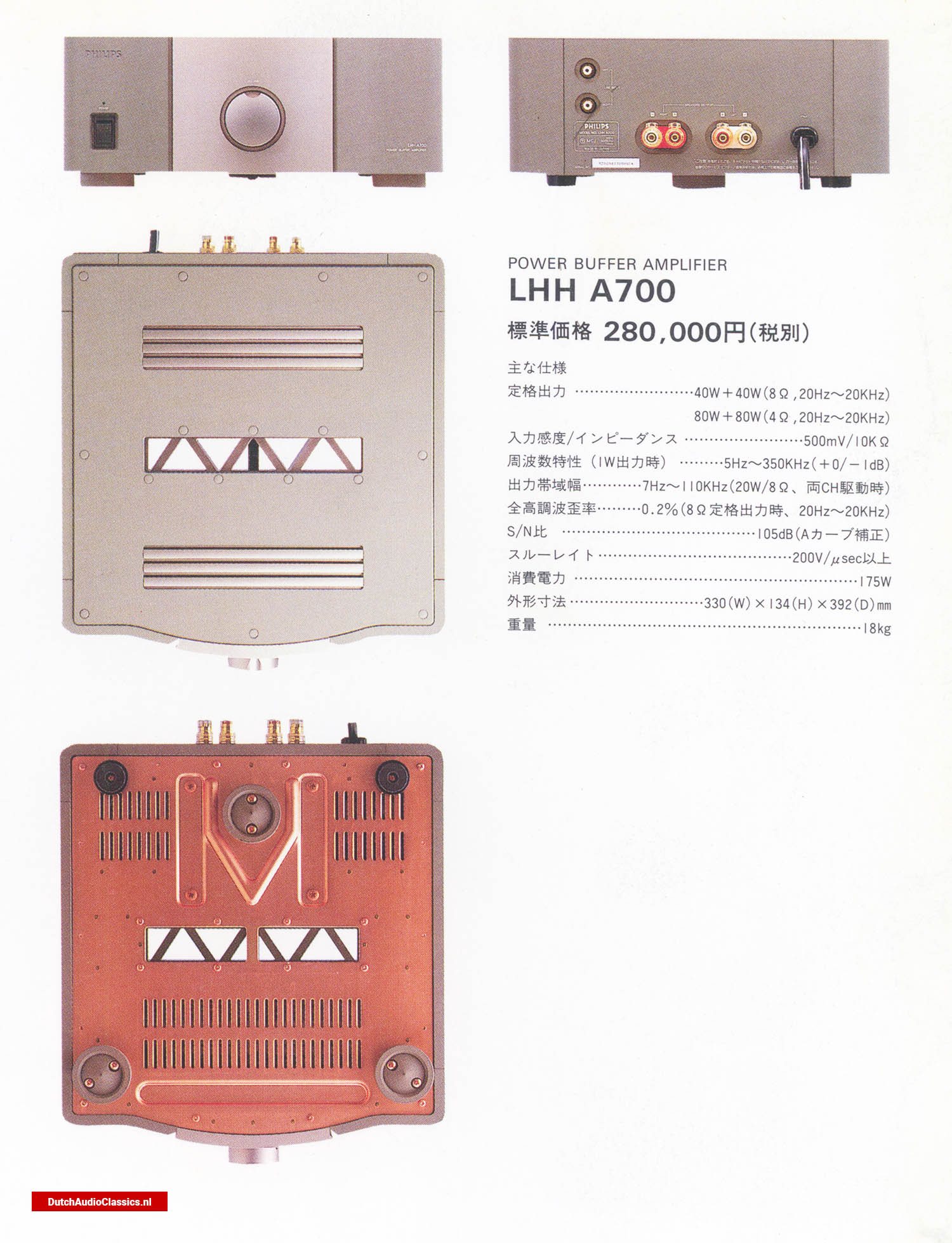
Philips LHH S700 Passive Line Selector
The Philips LHH S700 is a pure selector that combines the purity of the Philips LHH A700 with compatibility with a wide variety of line sources. It uses highly reliable rotary switches, which have been proven in the harsh field of professional equipment, and the shortest wiring distance to achieve source selection with minimal degradation in sound quality. The LHHA700 is a simple-is-best amplifier that embodies the basic principles of amplifiers.
The Philips LHHA700 is compatible with a variety of program sources without sacrificing the quality of the LHHA700, which embodies simplicity is best.

